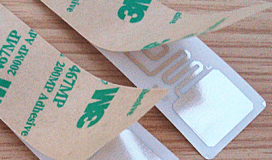In industries that deal with large scale production of their products, the number one priority is efficient tracking of their inventory with all the necessary information. Barcodes were that revolutionary technology, with whose introduction in 1974, the way business was done in general completely changed. But there were some major issues that barcodes couldn’t solve. The main reason was the requirement of a line of sight to read the barcode properly. This called for an increase in requirement for work force. Until there was a suitable alternative, companies had to spend an awful lot of money to keep their barcode systems viable. Then came the RFID hard tag which allowed a more efficient way to do the same thing barcodes did, and more!
With an RFID hard tag, you make it possible for the entire system to be automated with the use of minimum man power. RFID tags are minute devices which can be attached anywhere even on the smallest items. Their use in the clothing and stitched item industry is remarkable. If there’s an industry that faces the threat of shop lifting more than any other, it has to be the clothing and textile industry. Before there was this fool proof plan in place, people just walked into shops, sneaked in whatever they could fit under their clothes and walked out.
For RFID tags to work there are only 2 required components; the tag and the reader. The reader could be door sized equipment that reads any RFID tag that passes through it. In clothes, the tag could be in one of the sleeves or attached to the manufacturers name tag. So, sneaking your company’s property will be impossible for even the most street hardened cons.
RFID hard tag can be implemented on different levels in the apparel industry. First they’ll be attached to cartons in which the clothes are shipped in larger quantities. After that, individual clothing items are tagged when they are sent off to the stores and other outlets. Radio Frequency Identification has not only helped out the clothing and textile sector but numerous other sectors.



